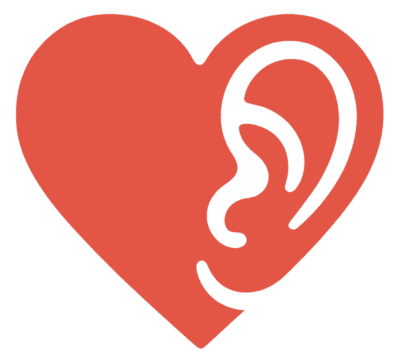Ever feel like you’re stuck in a dating Groundhog Day? Meeting different people, but somehow the same old frustrations keep popping up? Maybe you feel like you’re always wanting more closeness than your partner, or perhaps you’re the one needing space and feeling pressured. It can be baffling and honestly, pretty disheartening. If you’ve ever wondered why these patterns emerge, you might have stumbled across discussions about attachment theory dating.
Now, before you click away thinking this is going to be some dry, academic lecture – hang on! I’m not a psychologist, and this isn’t about diagnosing anyone. Think of attachment theory more like a lens people use to understand the different ways we tend to connect with others, especially romantically. The basic idea, as I understand it from countless articles, books, and late-night chats with friends trying to decode their love lives, is that our early experiences with caregivers shape a kind of blueprint for how we approach closeness, trust, and intimacy later on.
It’s kind of wild when you think about it, right? How stuff from way back then might still be influencing who we swipe right on or why we get triggered by certain things in relationships today. So, let’s unpack this a bit – not as rigid science, but as observed patterns – and explore four common ways these attachment styles might be impacting compatibility in your dating life.
Quick Peek: What Are These “Styles” People Talk About?
You’ll usually hear about three or four main patterns. Again, patterns, not personality sentences! People are way more complex than a single label.
- Secure: These folks generally feel pretty comfortable with both intimacy and independence. They tend to trust easily (but aren’t naive), communicate needs fairly directly, and handle conflict without totally melting down or shutting off. They kind of form a secure base. Sounds nice, right? It’s often seen as the goal, but it doesn’t mean they’re perfect.
- Anxious (or Preoccupied): If this is your tendency, you might really crave closeness and intimacy, but also worry a lot about your partner’s availability or feelings. There can be a fear of abandonment lurking, leading to needing more reassurance than others might. Does your brain sometimes go into overdrive wondering what that text really meant? That might be an anxious pattern showing up.
- Avoidant (or Dismissive): People leaning this way often place a high value on independence and self-sufficiency. They might feel uncomfortable with too much emotional closeness or vulnerability, and their instinct under stress or during conflict might be to pull away, shut down, or minimize the issue. They need their space, sometimes more than their partner realizes.
- (Sometimes you hear about Disorganized/Fearful-Avoidant): This one’s often described as a confusing mix – wanting closeness but also being deeply afraid of it, leading to kind of push-pull behaviors. Might feel a bit chaotic.
Super Important Caveat: Seriously, nobody fits neatly into one box 100% of the time. We can have different tendencies in different relationships, or under different stressors. This is just about recognizing potential patterns, not labeling yourself or others definitively!
Way 1: Communication Styles Can Seriously Clash
This is a biggie. How you ask for what you need, how you interpret your partner’s signals, and how you respond when needs aren’t met can look vastly different depending on attachment patterns.
Think about it: Someone with anxious tendencies might need very explicit verbal reassurance (“Yes, I still love you,” “I’m thinking of you”). They might express needs frequently because connection feels vital. Someone with avoidant tendencies, however, might communicate less directly about feelings, perhaps valuing actions over words, or needing significant alone time to process before talking. They might interpret the anxious partner’s bids for connection as ‘needy’ or overwhelming.
This can easily lead to that classic, painful “pursue-withdraw” dance: one person pushes for connection and communication, the other pulls away feeling pressured, which makes the first person pursue even harder… cue frustration and tears on both sides. Feeling fundamentally misunderstood in how you communicate? That’s a major hit to compatibility.
Way 2: Differing Needs for Closeness vs. Space
Ah, the eternal tango of togetherness and autonomy. Attachment theory dating discussions often highlight this as a core compatibility point. Secure folks tend to navigate this balance relatively smoothly, enjoying intimacy but also respecting individual space.
But mix anxious and avoidant patterns? That’s often where sparks fly – and not always the good kind. The partner leaning anxious might desire frequent contact, deep emotional sharing, and lots of quality time together to feel secure. The partner leaning avoidant might need significant downtime, feel smothered by constant contact, and prioritize independence to feel okay.
Neither need is inherently ‘wrong,’ but the gap between them can feel enormous. It can lead to one person constantly feeling lonely or insecure, and the other constantly feeling suffocated or criticized for needing space. While compromise is possible, sometimes the fundamental difference in what feels comfortable and safe is just too wide to bridge happily long-term. I’ve seen friends try so hard to make this work, and sometimes it just… doesn’t, despite genuine affection being there.
Way 3: How You Both Handle Conflict and Stress
Disagreements are inevitable. Stress happens. How you both react in those moments says a lot about compatibility.
- Someone leaning secure might approach conflict with the aim of resolution, expressing their view while also trying to understand their partner’s. They can tolerate discomfort.
- Someone leaning anxious might feel intense distress during conflict, fearing it signals the end. They might escalate emotions (protest behavior) trying to get connection or reassurance, or become overly accommodating to avoid abandonment.
- Someone leaning avoidant might react by shutting down emotionally, withdrawing physically or mentally, dismissing the importance of the issue, or trying to quickly smooth things over without real resolution just to end the discomfort. That shutdown can feel like abandonment to an anxious partner. Ouch.
If one person needs to talk things through immediately and emotionally, and the other needs hours (or days!) of silent space to process, navigating even minor bumps can become incredibly difficult and damaging. Can you weather storms together without capsizing?

Way 4: Building (and Maintaining) Trust Looks Different
Trust is the bedrock, right? But how it’s built, and how easily it’s broken (or perceived to be broken), can also be influenced by attachment patterns.
Secure types tend to offer trust more readily, perhaps assuming goodwill until proven otherwise. They believe their partner is reliable. Anxious types might need more consistent evidence and reassurance to build trust, and minor inconsistencies or perceived slights can trigger deep anxieties about reliability and commitment. Avoidant types might build trust very slowly, relying heavily on themselves first and foremost. They might not even expect deep reliance on a partner, or their version of trust looks more like respecting boundaries and independence than deep emotional vulnerability.
Can you build a shared sense of safety and reliability that meets both your needs? If one person needs constant proof and the other struggles to offer consistent emotional vulnerability, establishing that foundational trust can be a real challenge.
So, What Does This Mean for Your Dating Life?
Okay, information overload maybe? Take a breath. The point of understanding attachment theory dating concepts isn’t to pathologize yourself or potential partners, or to find some mythical “perfectly secure” person (spoiler: they don’t exist in pure form).
It’s really about:
- Self-Awareness: Gently noticing your own patterns. When do you feel anxious? When do you pull away? What triggers those reactions? No judgment, just curiosity.
- Partner Awareness: Recognizing potential patterns in others. Not to label them, but to understand why they might react the way they do. Does their need for space make more sense now? Does their need for reassurance feel less like a criticism and more like a pattern?
- Understanding Dynamics: Seeing why certain pairings feel easy and others feel like constant hard work. It helps make sense of the push-pull or the communication breakdowns.
- Better Communication: If you know you tend towards anxiety, maybe you can learn to express your need for reassurance more calmly. If you know you tend towards avoidance, maybe you can practice staying present for one minute longer during tough talks.
Think of it as another tool in your relationship toolkit. It doesn’t excuse bad behavior (lying, cheating, abuse are never okay, regardless of attachment style!), but it can provide a framework for understanding the underlying dynamics that impact compatibility.
Learning about this stuff, for me at least, brought a few ‘aha!’ moments that helped me navigate dating with a bit more compassion – for myself and for the guys I was meeting. It didn’t magically solve everything, but it definitely helped make sense of some things that used to just feel confusingly painful. Maybe it can offer you a useful lens too, as you figure out what truly works for you.
Frequently Asked Questions
How does attachment theory help improve understanding and communication in dating?
By recognizing your own and your partner’s attachment patterns, you can develop greater self-awareness and empathy. This understanding facilitates better communication, helps address incompatibilities more compassionately, and builds trust based on mutual understanding, improving relationship dynamics.
In what ways do attachment styles impact the need for closeness versus space in a relationship?
Secure individuals usually balance closeness and independence smoothly. Anxious partners crave frequent contact and emotional sharing, while avoidant partners need more space and independence. These conflicting needs can create feelings of loneliness or being overwhelmed, making long-term compatibility challenging.
How can differing communication styles caused by attachment patterns affect a relationship?
Different attachment patterns lead to varied communication styles; for example, anxious individuals may seek frequent reassurance, while avoidant individuals might prefer actions over words or need space. These differences can cause misunderstandings and conflict, especially in pursuing and withdrawing behaviors.
What are the main attachment styles and how do they influence relationships?
The main attachment styles are secure, anxious (preoccupied), avoidant (dismissive), and disorganized (fearful-avoidant). These styles influence how comfortable someone is with intimacy, independence, handling conflict, and building trust, thereby affecting relationship dynamics and compatibility.
What is attachment theory and how does it relate to dating?
Attachment theory is a way to understand how our early experiences with caregivers shape our patterns of intimacy, trust, and connection in romantic relationships. It helps explain why people behave in certain ways with partners and how these behaviors impact compatibility.




